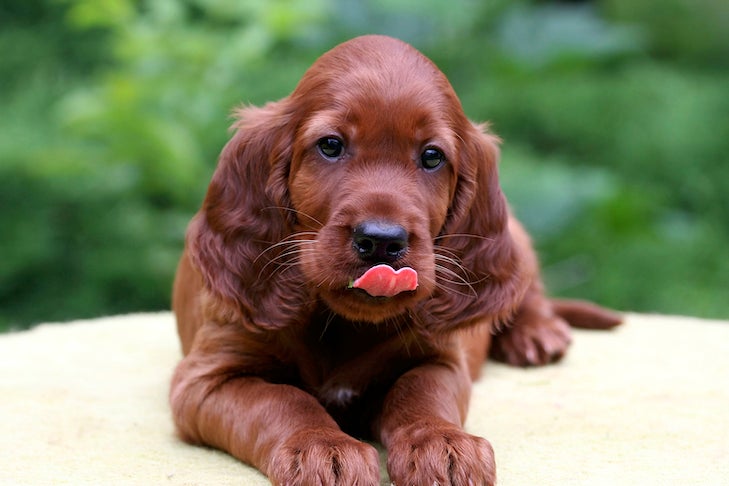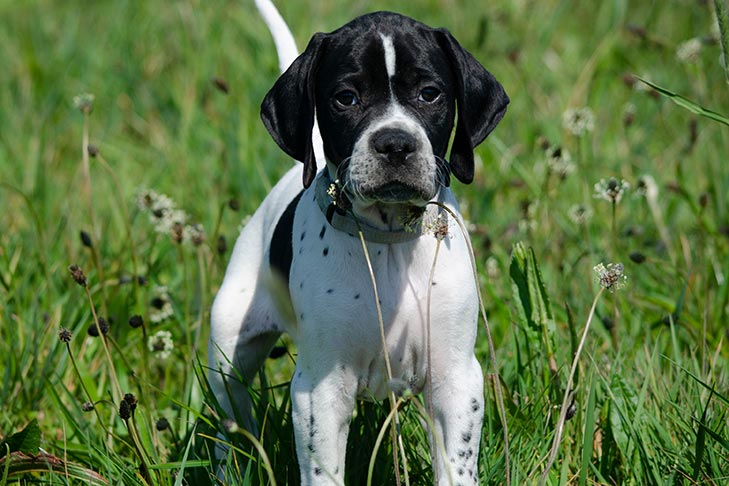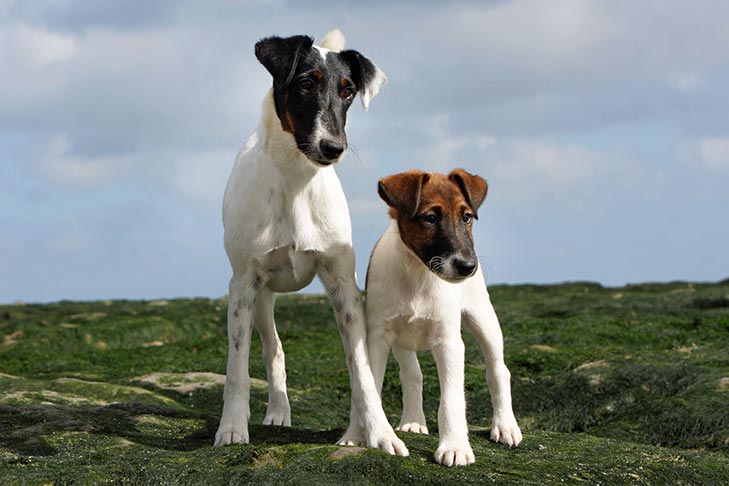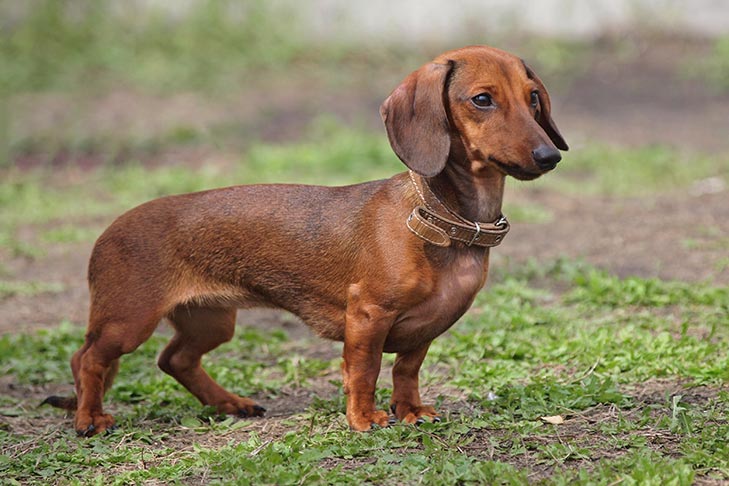
- beagle
- mastiff
- most popular breeds
- irish setter
- collie
- gordon setter
- dachshund
- irish water spaniel
- english setter
- dog breeds
- pointer
- fox terrier
The top five breeds of the 1880s were all working gundog breeds. While this is the only decade that the English Setter reigned as the number-one breed, it remained in the top ten for four decades, though it hasn’t appeared there in the top ten since the 1910s. Irish Setters, the number-two breed of the decade, fell to number seven in the 1890s and then did not make the top ten again until the 1970s, when it ranked number six. Three of the breeds in the decade’s top ten would never make the list again—Irish Water Spaniels, Gordon Setters, and Mastiffs.
1. English Setter

From the best authorities on the subject, it appears that the English Setter was a trained bird dog in England more than 400 years ago. Evidence points to the English Setter’s origins in crosses of Spanish Pointer, large Water Spaniel, and Springer Spaniel, which combined to produce a superb bird dog with a high degree of proficiency in finding and pointing game in open country.
2. Irish Setter

The Irish Setter first became a popular breed in the 18th century. The solid-red Setter first appeared in Ireland in the 19th century and in 1812, the Earl of Enniskillen declared that he would have no other breed in his kennel. Solid red became synonymous with dogs of “high mark” and the breed was revered for its remarkable sporting abilities.
3. Pointer

The Pointer was the first dog, so far as we know, used to stand game in the sense in which we use the term today, and was developed as a distinct breed much earlier than any of the setters. It seems likely that Pointers came into general use in Spain, Portugal, throughout Eastern Europe, and in the British Isles at approximately the same time, although the development of the English Pointer took place in Great Britain.
4. Irish Water Spaniel

The Irish Water Spaniel was one of the first nine breeds recognized by the AKC on its founding. It’s likely that the breed resulted from interbreeding two different strains of liver-colored water spaniels, one from the north of Ireland and one from the south, as well as influences from mainland Europe. The breed’s foundation sire, Boatswain, appears in the pedigree of every Irish Water Spaniel today.
5. Gordon Setter

The Gordon Setter derives its name from a prominent nobleman, the 18th-century Duke of Gordon, who patronized this historic dog breed. The heavy, square frame makes the Gordon Setter well-suited to moving over the Scottish moors in a steady, persistent fashion. They also helped the Duke locate his prey, and it was recognized in 1924 by Britain’s Kennel Club, albeit under a different name.
6. Beagle

The actual origin of the Beagle seems to be obscure because of the absence of reliable documentation on the earliest days of development. The turning point for American Beagles came in the 1860s, when dogs from a well-bred strain in England were imported to inject a beautiful breed type.
7. Collie

There are two varieties of Collies, the rough-coated being by far the more familiar. However, many fanciers have increased their breeding of the smooth-coated variety and many smooths of excellent type are now being exhibited. Although the exact origin of the Collie remains an enigma, both varieties existed long ago in the unwritten history of the herding dogs of Scotland and northern England.
8. Fox Terrier

The Fox Terrier is an old English breed. For almost 100 years it was registered and shown in the United States as one breed with two varieties, Smooth and Wire. Smooth Fox Terriers preceded the Wires in the show ring by 15 to 20 years. At first, they were classified as sporting dogs, a tribute to their keen nose, remarkable eyesight, and stamina in driving foxes from their hole.
9. Dachshund

The Dachshund can be found in historical accounts dating back to the 15th, 16th, and 17th centuries, when illustrations reflected badgers being hunted with dogs with elongated bodies, short legs, and hound-type ears. The dogs of medieval Europe were noted to have the tracking ability of hounds and the proportions and temperament of terriers, much needed to pursue their main quarry of badgers.
10. Mastiff

The Mastiff makes a superb guard dog. They dates back thousands of years, with ancient Near Eastern carvings in the British Museum depicting animals that resemble the Mastiff. It’s likely that the Phoenicians, Carthaginians, Romans, and British helped popularize these dogs through their trading and military enteprises.

